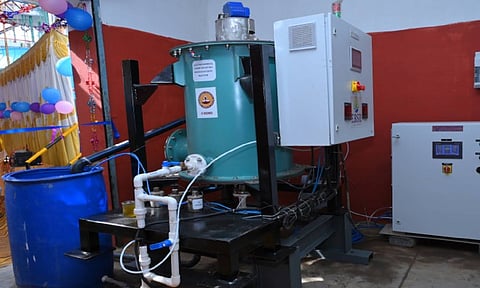

CHENNAI: The Indian Institute of Technology Madras (IIT Madras) on Friday announced that it has developed and deployed a new technology for efficiently processing wastewater from the textile industry. It focuses on improving the techno-economic feasibility of Zero Liquid Discharge (ZLD) plants by developing an electrochemical-based methodology.
The discharge from textile industries not only affects the aesthetic value and water clarity but also reduces photosynthetic activity and poses toxic risks to humans, aquatic organisms, and other life forms.
To mitigate environmental impacts, textile industries are mandated to implement ZLD systems, which recovers and reuses wastewater and salts. However, the conventional ZLD process is associated with high capital and operating costs, significant energy consumption, and a large carbon and area footprint.
IIT-M’s technology was undertaken through comprehensive lab-scale studies using synthetic wastewater ranging from small volumes of 500 ml to larger volumes of 50 litres for the electrochemical ozone oxidation system (ECOOP) for the removal of organic dyes.
Led by Prof Indumathi M. Nambi of IIT-M, this pilot project was implemented at Kunnakalpalayam Common Effluent Treatment Plant (CETP) in Tirupur. It showed a significant reduction in harmful compounds in ECOOP-treated samples compared to chlorinated samples from the CETP. The pilot system successfully achieved 96% colour removal and 60% COD removal for dyebath effluent.
Based on the results obtained from the initial deployment, the research team scaled up the system to process 400 litres per day. These trials aim to optimise the system for real-world application.
The advantages of this technology in comparison to existing ones include segregation of dyebath effluent for colour removal, which reduces 75% load on RO system, reduction in capital infrastructure cost for RO and reject evaporators. Hence, it achieves lower carbon footprint, and the chlorine-free colour removal process avoids formation of carcinogenic chlorinated compounds.